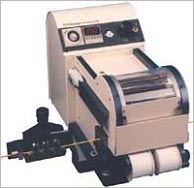
Home![]() Profile
Profile ![]() Product Range
Product Range![]() Industries
Industries![]() Infrastructure
Infrastructure![]() Our Quality
Our Quality![]() Custom Manufacturing
Custom Manufacturing![]() Network
Network![]() Contact Us
Contact Us![]() Send Enquiry
Send Enquiry
Dyestuffs| Inkjet Dyes | Dyes for Wax Printing | Textile Auxiliaries | Optical Brightner | Caramel Color | Synthetic Food Colors
Natural Food Colors| Pigments| Inorganic Pigments| Dyes Intermediates| Resist Salt| Klostrozal Dyes for Soap And Detergent



Colour Index | Dyes | Pigments | Applications | Glossary | FAQ's | Buyers Guide | Global Dyestuff Industry
![]()
|
Quick
Enquiry
|
| Pigment | Color | Application |
| Titanium dioxide | White | Used in Variety of resins |
| Zinc sulphide | White | Wide use |
| Iron oxides | Red, yellow, brown, and black | Wide use |
| Lead chromates and lead chromate molybdates | Colors can include bright yellow and orange | Good use |
| Cadmium | Comes in reds, yellows, oranges and maroons | Excellent for engineering resins |
| Chromium oxides | Green | Shows good heat and light fastness, variety of uses |
| Ultramarines | Comes in blue, pink and violet shades | Works in a wide gamut of resins |
 Inkjet
Marking- Inkjet technology has vastly improved over the years. With
features of less maintenance and faster start-ups, Inkjet marking systems
are now more reliable and user friendly. For the wire and cable industry, a
dye or pigmented ink, with an Methyl Ethyl Ketone base is applied.
Inkjet
Marking- Inkjet technology has vastly improved over the years. With
features of less maintenance and faster start-ups, Inkjet marking systems
are now more reliable and user friendly. For the wire and cable industry, a
dye or pigmented ink, with an Methyl Ethyl Ketone base is applied. Hot
Stamp Marking- Hot stamp marking is still among the most inexpensive
techniques for wire identification and is perhaps with exception of laser
the only viable option for marking of the Teflon insulated wire. Four
important factors here are correct air pressure, dwell time, wheel
temperature, and lastly foil. Use of pigments come in the foil part. The
foil comprises of a backing and pigment. The pigment gets transferred to
wire insulation through the heat emanating from the character wheels. It is
vital to note here that certain types of pigments can stick to only
particular substrates and would need different temperatures to transfer
them.
Hot
Stamp Marking- Hot stamp marking is still among the most inexpensive
techniques for wire identification and is perhaps with exception of laser
the only viable option for marking of the Teflon insulated wire. Four
important factors here are correct air pressure, dwell time, wheel
temperature, and lastly foil. Use of pigments come in the foil part. The
foil comprises of a backing and pigment. The pigment gets transferred to
wire insulation through the heat emanating from the character wheels. It is
vital to note here that certain types of pigments can stick to only
particular substrates and would need different temperatures to transfer
them.
Colour Index | Dyes | Pigments | Applications | Glossary | FAQ's | Buyers Guide | Global Dyestuff Industry
Home![]() Profile
Profile
![]() Product
Range
Product
Range![]() Industries
Industries![]() Infrastructure
Infrastructure![]() Our
Quality
Our
Quality![]() Custom
Manufacturing
Custom
Manufacturing![]() Network
Network![]() Contact
Us
Contact
Us![]() Send
Enquiry
Send
Enquiry